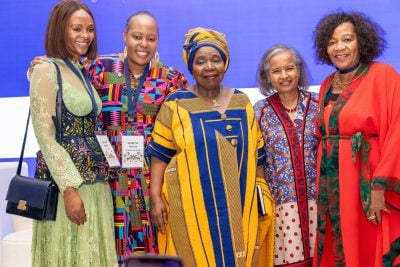Devolution of power from the centre to county level is one of the major achievements of Kenya’s new political dispensation. Next year, after the elections, 47 county governments will be inaugurated countrywide to empower local people to take charge of their own destinies.
Kenya’s attempt at devolution has a long history. Before independence, one of the two leading parties in the country, the Kenyan African Democratic Union (KADU), had fought for the devolution of state power to the regions because it feared domination of the smaller ethnic groups by the larger ones.
Though KADU’s fears had some merit, the party’s concerns were seen by the Jomo Kenyatta-led Kenya African National Union (KANU) that formed the first post-independence government, as largely driven by the interests of white settlers of British origin who wanted to further their anti-nationalist agenda.
KADU wrapped its devolution struggle in African garbs, calling it Majimbo, but, as the Kenyan academic Dr Othieno Nyanjom has pointed out, the party’s demands were “tainted by an underlying racist desire to restrain the hand of the incoming government from the affairs of the White Highlands owned exclusively by white settlers”.
Nevertheless, KADU and its white backers got their way at the independence talks at Lancaster House in London in 1961, and Kenya gained independence in 1963 with a constitution that provided for devolved governance via a bicameral legislature and regional assemblies.
But within one year of independence, KADU itself was no more – its heavyweight members crossed the carpet to join KANU and thus effectively dissolved the party and its Majimbo agenda.
That gave President Kenyatta a free hand to introduce sweeping constitutional changes in 1965 that, among other things, abolished Majimbo and transferred much of the taxation and service delivery powers of the regional assemblies to the central government.
But the unwillingness of KANU to seriously dismantle the colonial fundamentals that had been so effective against African interests meant that regional inequalities in development and resources continued to fuel the demand for devolution throughout Kenya’s 48 years of independence.
Therefore it came as no surprise when in 2010, devolution became one of the most divisive issues in the run-up to the constitutional referendum on 4 August, where the vote was finally 66% to 34% in favour of ratifying the new constitution.
What, in fact, carried the day were the guarantees on devolution entrenched in Chapter 11 of the constitution, which provided for the following:
That, there shall be a county government for each of the country’s 47 counties, to be headed by a governor. That, the county governments shall have reliable sources of revenue (15% from central government, and any more they can raise themselves via taxes, fees and other activities), and an Equalisation Fund that will ensure that all 47 counties will be equitably resourced financially.
Generally, the devolution exercise is meant to achieve eight objectives, chief among which are: To give powers of self-governance to the people; to recognise the right of communities to manage their own affairs; and to enhance their participation in decisions affecting their lives.
“Now, that to me,” says Prof Karega Mutahi, permanent secretary of the Ministry of Local Government, “is a big leap in the democratisation process of the country. This constitution is a major transformation of this Republic.”
But the people will have to wait till next year’s elections are held (between August-December 2012), to enjoy their newly-given powers.
Want to continue reading? Subscribe today.
You've read all your free articles for this month! Subscribe now to enjoy full access to our content.
Digital Monthly
£8.00 / month
Receive full unlimited access to our articles, opinions, podcasts and more.
Digital Yearly
£70.00 / year
Our best value offer - save £26 and gain access to all of our digital content for an entire year!
 Sign in with Google
Sign in with Google 


